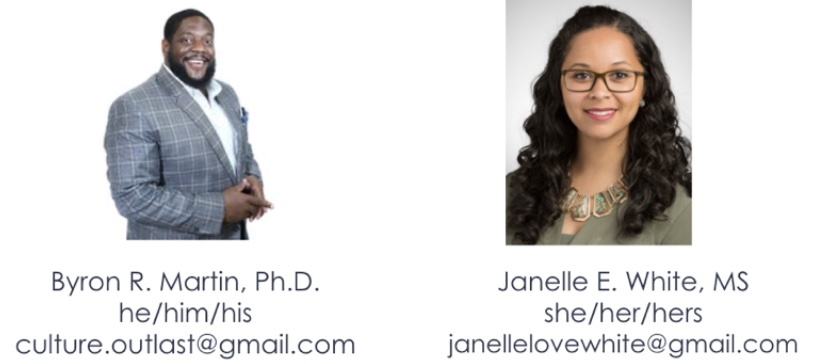About the C.A.N. I training series
The C.A.N. I training series was developed and will be led by Dr. Byron Martin and Janelle White, MS. All text taken from this downloadable PDF, provided by our trainers.
1. Creating a shared language around inclusivity - Through this session, participants will gain a basic understanding of the terms connected to inclusivity and work through a broad understanding of frameworks that will be used during the subsequent trainings. Participants will also engage in practices of introspection and mindfulness to equip them for the conversations during the following sessions. By equipping our community with a shared language, we increase our ability to move toward a more effective, equitable, and inclusive space.
2. Privilege and My Place in the World - This session will discuss how various areas of privilege intersect with power and create systems of oppression for marginalized identities. Attendees will look at their own experiences as allies and determine if they have unknowingly contributed to systems of oppression or have effectively supported oppressed groups through their perceived allyship.
3. Who am I? Who are you? Why Does it Matter? - Intersectionality is a platform in which to identify a problem and to ask questions about who is missing from the conversation. Kimberlé Crenshaw, a professor at UCLA School of Law and Columbia Law School, coined the expression “intersectionality” in 1989 in her article, “Demarginalizing the Intersection of Race and Sex: A Black Feminist Critique of Antidiscrimination Doctrine, Feminist Theory, and Antiracist Politics.” It is Crenshaw’s belief that race, and gender are not mutually exclusive and cannot be treated as such when discussing and analyzing experience (Crenshaw, 1989). If we broaden this philosophy to encompass multiple marginalized identities, which people will we find missing from the conversation?
4. Microaggressions, Bias, and Stereotypes O'My... When we consider the ways in which we interact with others, we have to dig deeper into understanding why our biases and stereotypes exist and how they then are represented through our behaviors, or microaggressions, toward others. This session discusses the three types of microaggressions, defines bias and stereotypes, while asking participants to be reflective of their own biases they carry.
 Food council members and SNAP Ed program coordinators will be continuing the C.A.N. I. training series, Creating and Nurturing Inclusivity. Sponsored by the State Department of Health, Division of Nutrition and Physical Activity, participants who already completed level 1 in 2021 will have the opportunity to complete levels 2-3 in March and July of 2022. We look forward to reconnecting, learning and increasing our knowledge and action in this inclusivity journey.
Food council members and SNAP Ed program coordinators will be continuing the C.A.N. I. training series, Creating and Nurturing Inclusivity. Sponsored by the State Department of Health, Division of Nutrition and Physical Activity, participants who already completed level 1 in 2021 will have the opportunity to complete levels 2-3 in March and July of 2022. We look forward to reconnecting, learning and increasing our knowledge and action in this inclusivity journey.

